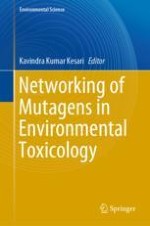2019 | OriginalPaper | Chapter
Contamination Links Between Terrestrial and Aquatic Ecosystems: The Neonicotinoid Case
Authors : Victor Carrasco-Navarro, Oksana Skaldina
Published in: Networking of Mutagens in Environmental Toxicology
Publisher: Springer International Publishing
Activate our intelligent search to find suitable subject content or patents.
Select sections of text to find matching patents with Artificial Intelligence. powered by
Select sections of text to find additional relevant content using AI-assisted search. powered by
